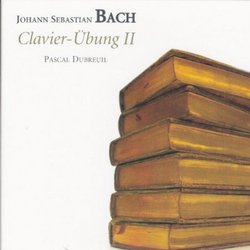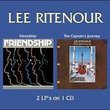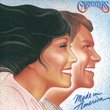| All Artists: J.S. Bach, Debreuil Title: Clavier Ubung 2 (Dig) Members Wishing: 0 Total Copies: 0 Label: Ramee Original Release Date: 1/1/2010 Re-Release Date: 7/13/2010 Genre: Classical Style: Number of Discs: 1 SwapaCD Credits: 1 UPC: 4250128510011 |
Search - J.S. Bach, Debreuil :: Clavier Ubung 2 (Dig)
 | J.S. Bach, Debreuil Clavier Ubung 2 (Dig) Genre: Classical
In 1735, Bach entrusted the second part of his Clavier-Übung to a Nuremburg engraver. The two pieces brought together in the second part of the Clavier-Übung--the Concerto in the Italian Style and the Overture ... more » |
Larger Image |
CD Details
Synopsis
Product Description
In 1735, Bach entrusted the second part of his Clavier-Übung to a Nuremburg engraver. The two pieces brought together in the second part of the Clavier-Übung--the Concerto in the Italian Style and the Overture in the French Manner--share more than one unifying element, and present several very particular aspects within the work of the composer, as well as within the style of keyboard composition then current in Europe.
Similar CDs
| Contortionist Exoplanet Genres: Pop, Rock Label: Good Fight | |
| Carpenters Made in America Genres: Pop, Rock, Broadway & Vocalists Label: A&M | |

 Track Listings (16) - Disc #1
Track Listings (16) - Disc #1

